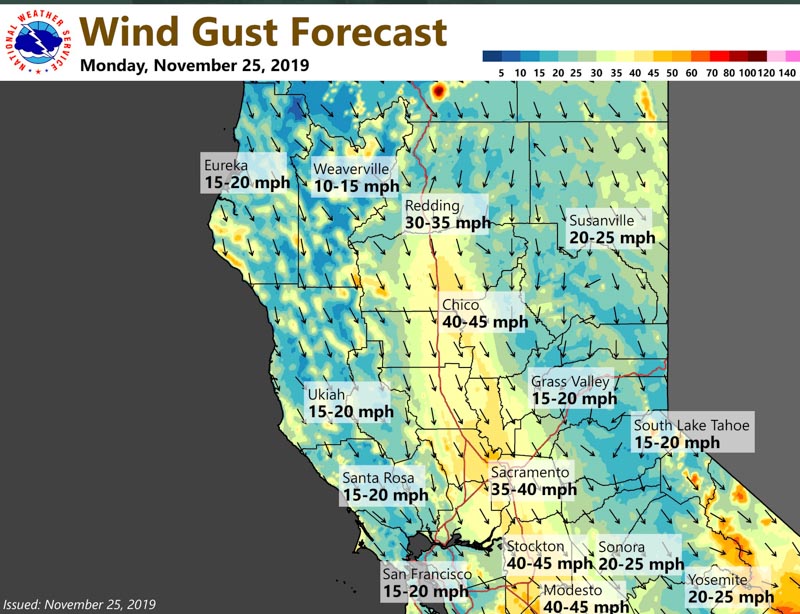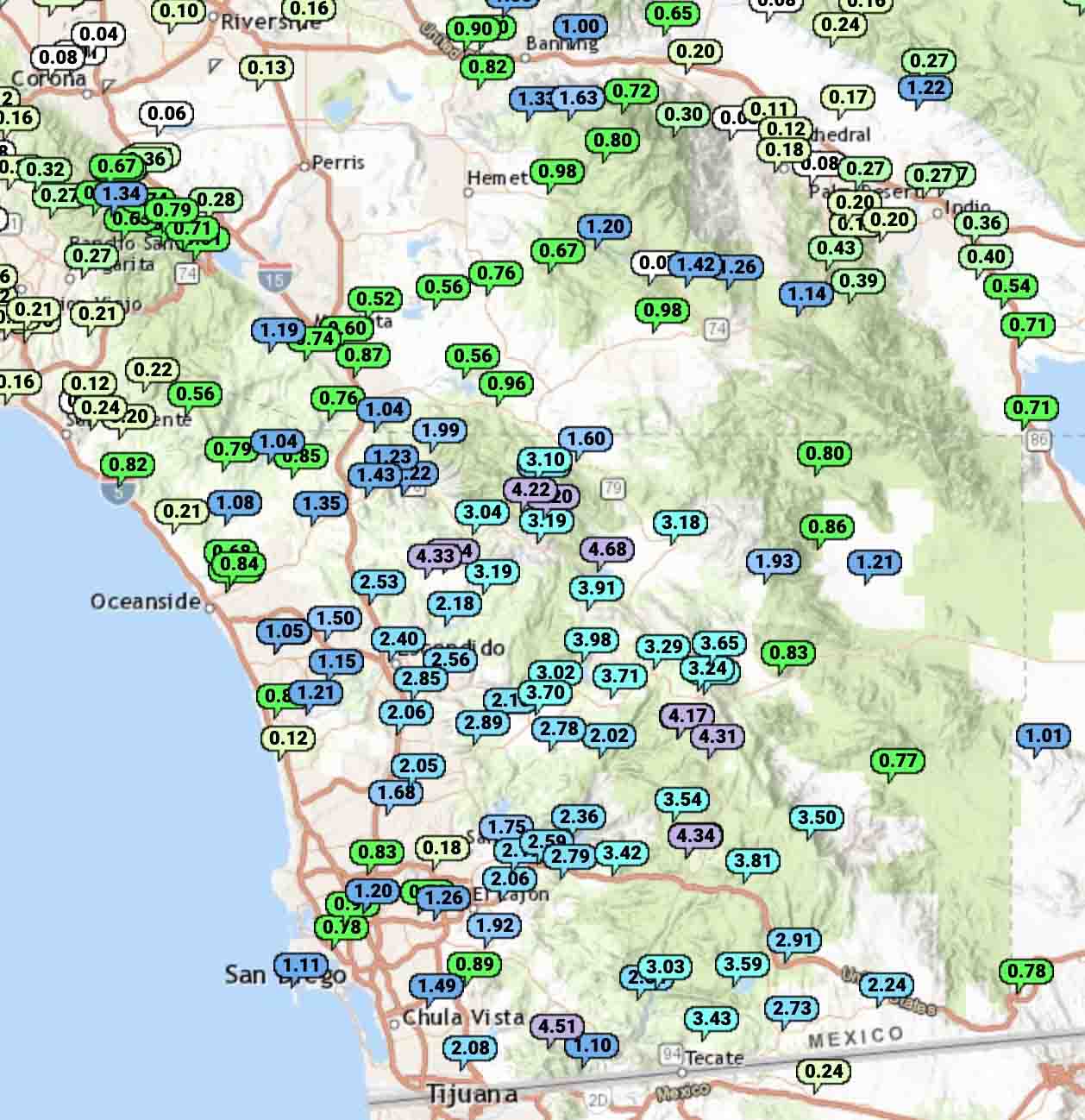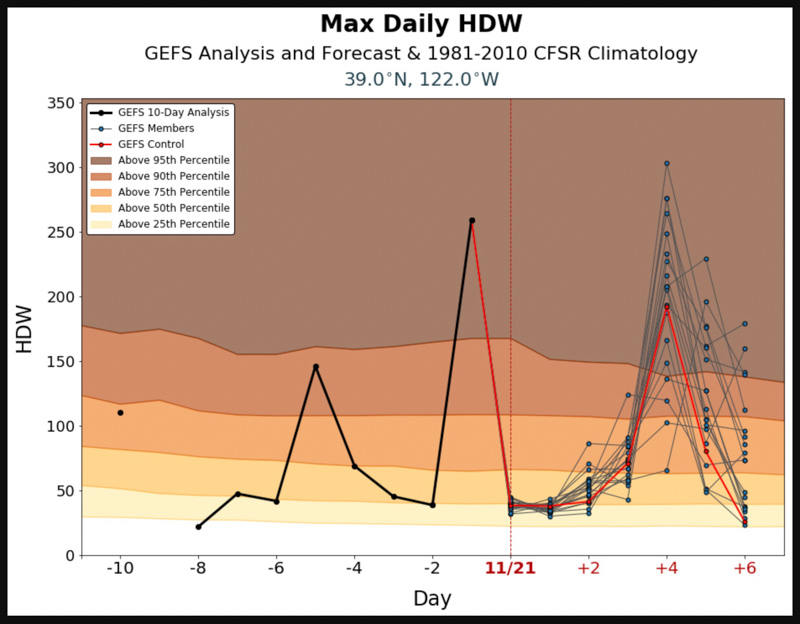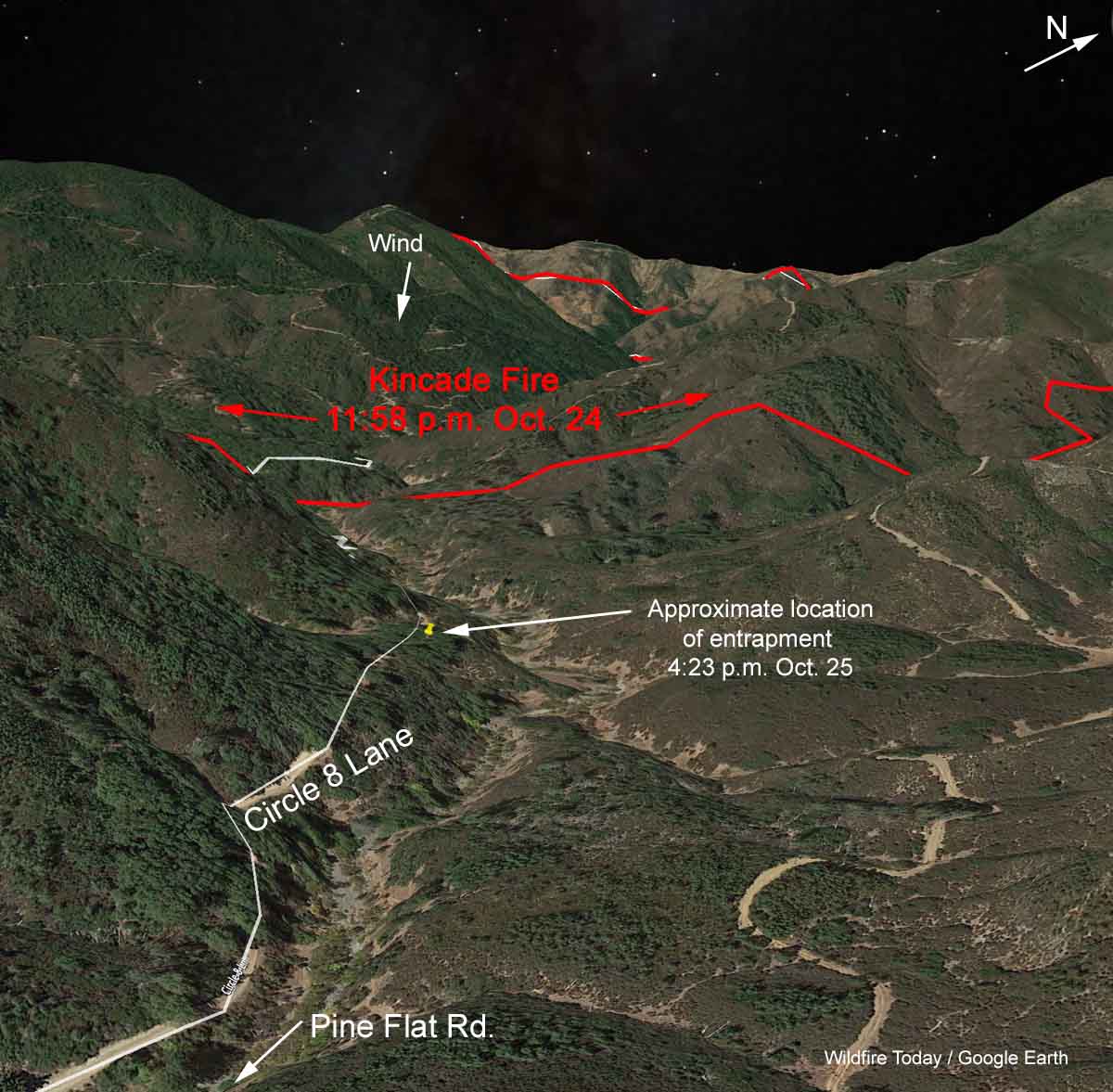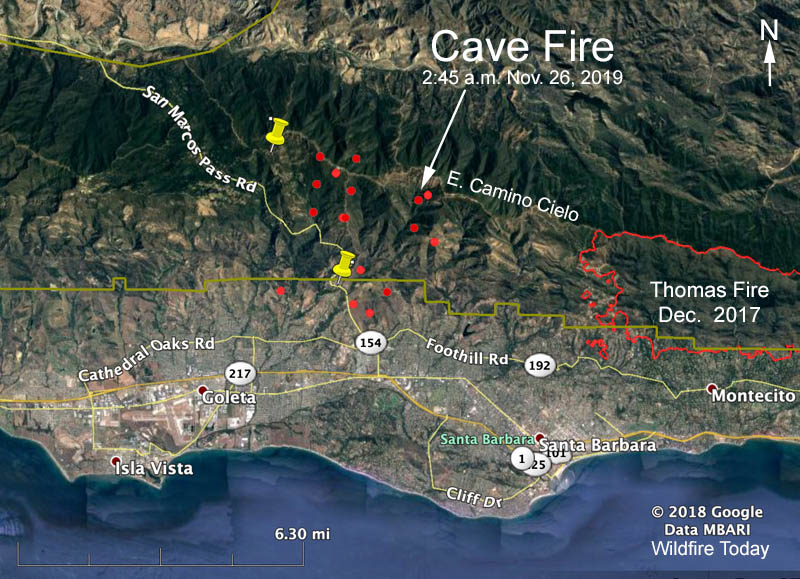
UPDATED at 1:55 p.m. PST November 26, 2019
At an 11 a.m. press conference Tuesday fire authorities said the Cave Fire at Santa Barbara, California had burned 4,262 acres. In addition to the 10 air tankers and 9 helicopters, 500 firefighters are working on the blaze.
The strong wind that drove the fire rapidly downhill toward the city Monday night slowed on Tuesday. Rain is expected to begin at about 10 p.m. Tuesday, but forecasters have backed off the two inches that was predicted through Thursday, cutting it in half, to about one inch. There is a chance of more rain this weekend.
(Click here to see all articles on the Cave Fire, including the most recent)
Updated at 8:01 a.m. PST Nov. 26, 2019
The spread of the Cave Fire northwest of Santa Barbara, California slowed after midnight Monday night but it continued to grow actively near Painted Cave Road and had burned into the San Marcos Foothills Nature Preserve just north of the city limits of Santa Barbara.
At 7:34 a.m. PST Mike Eliason of the Santa Barbara County Fire Department reported, “4,100 acres with 0% containment. 600 firefighters assigned. No structures (homes) destroyed & no injuries.”
In the map above the red dots represent heat detected by a satellite orbiting 500 miles above the earth. The locations have not been confirmed by individuals closer to the ground. We expect to obtain slightly more accurate satellite data later Tuesday morning.
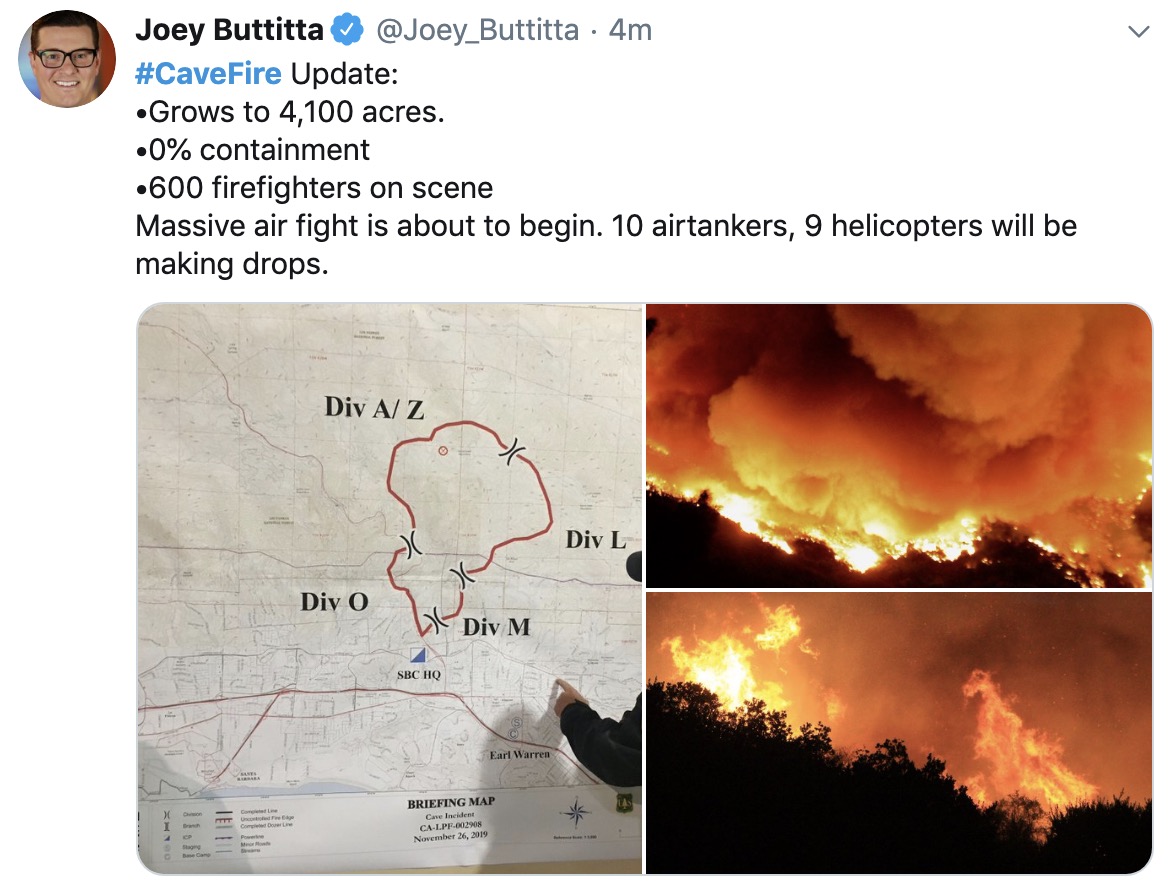
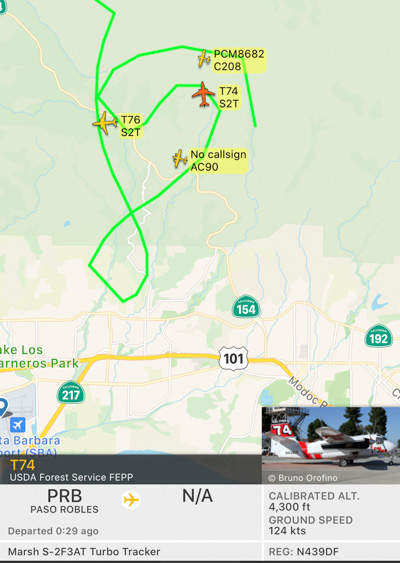
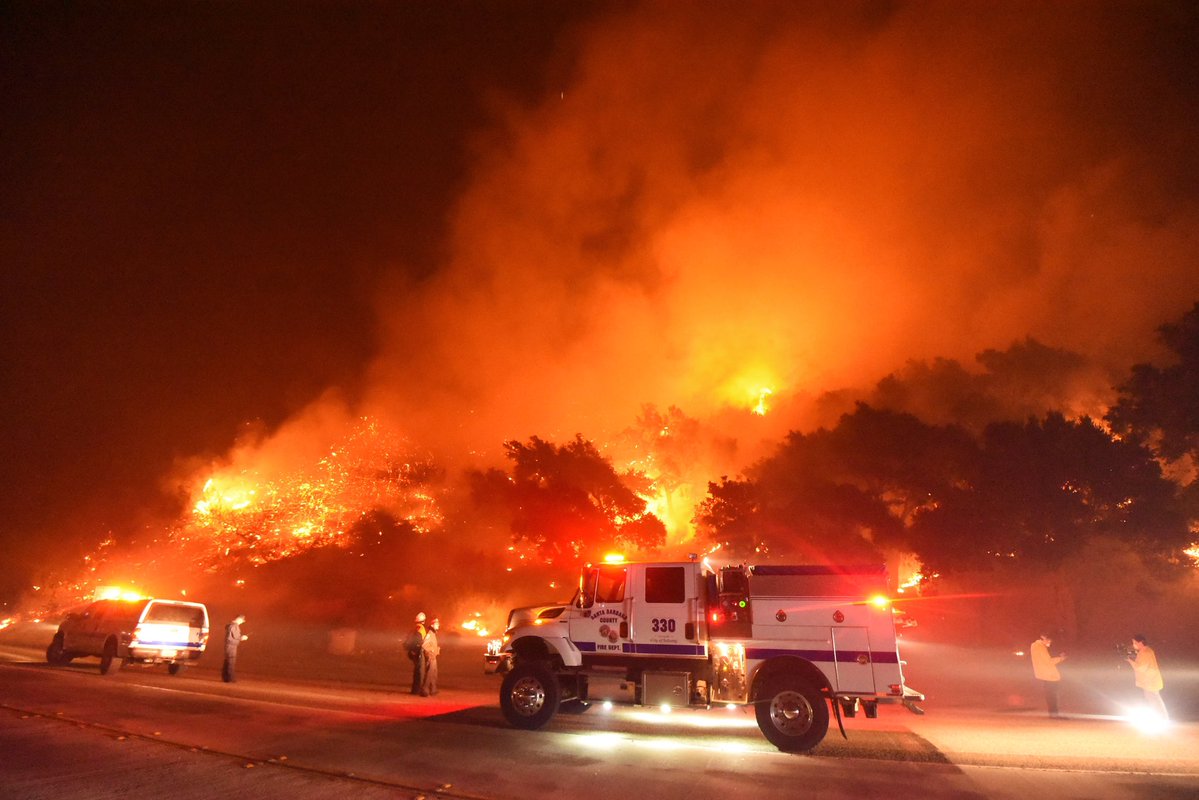
Originally published at 10:40 p.m. PST November 25, 2019
Firefighters are working to protect structures threatened by the Cave Fire that spread rapidly after it started northwest of Santa Barbara, California at 4 p.m. Monday. It was pushed by winds out of the north that increased from 5 mph to 16 mph, with gusts up to 30. At sunset a nearby weather station in San Marcos Pass recorded a temperature of 61 degrees with 16 percent relative humidity.
Continue reading “Cave Fire near Santa Barbara burns thousands of acres, forcing evacuations”


